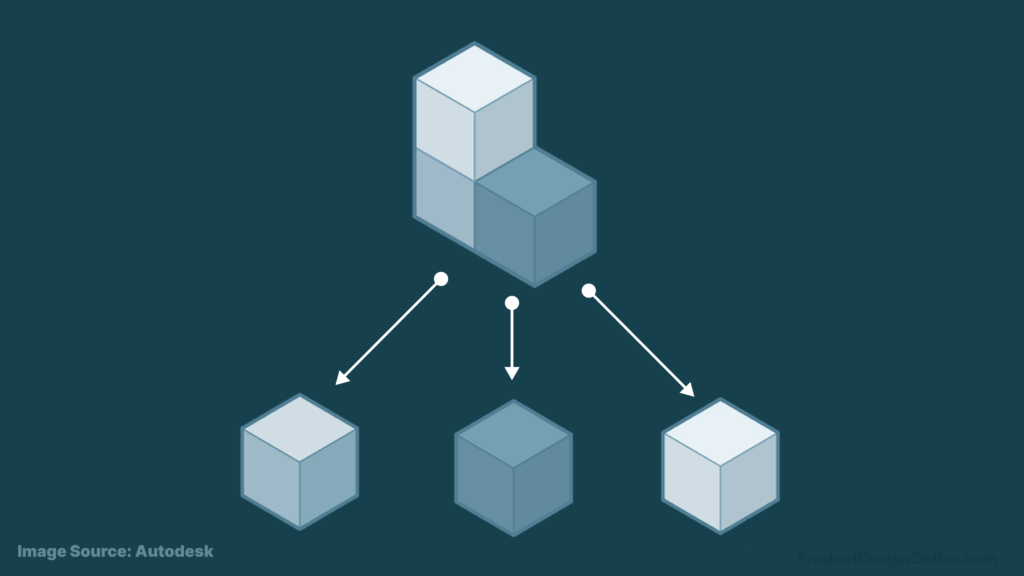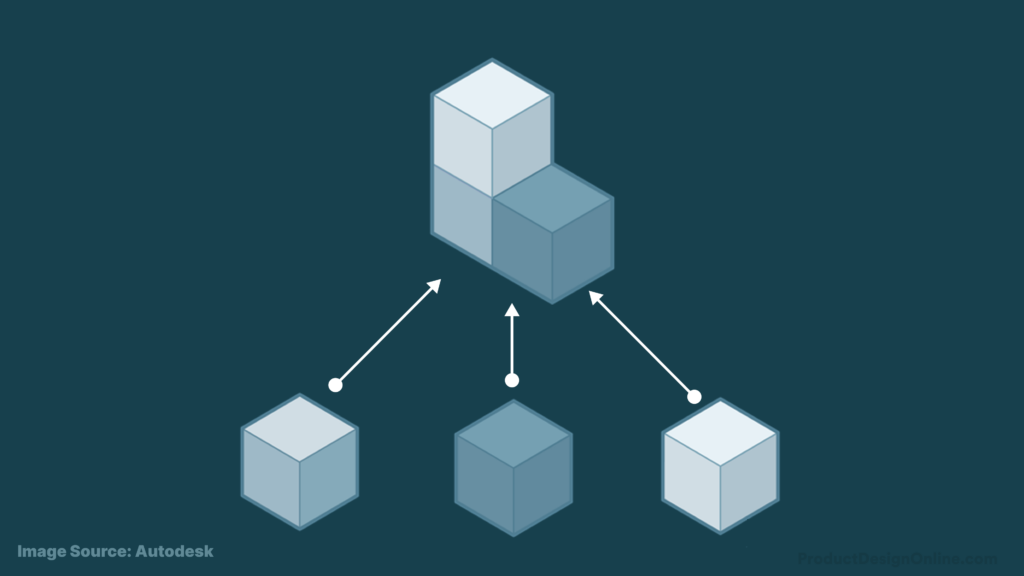Top-Down 3D Modeling

Top-down 3D modeling is a method of creating 3D models that begins with a high-level description of the object being modeled and then building each individual part within the context of the assembly. Some potential benefits of top-down 3D modeling include:
Efficiency: Top-down modeling can save time and resources by allowing the designer to create and modify parts within the context of the assembly, rather than starting from scratch (or adjusting separate files) every time a change is needed.
Consistency: Top-down modeling can help ensure consistency across the entire model by allowing designers to establish rules and constraints that apply to all parts of the model.
Ease of modification: Because top-down models are created using a hierarchical structure, it is easier to modify individual components of the model without affecting the entire design.
Integration with other design tools: Top-down modeling can be integrated with other design tools such as computer-aided manufacturing (CAM) software, making it easier to create manufacturing-ready designs.
Bottom-Up 3D Modeling
 Bottom-up 3D modeling is a method of creating 3D models by starting with individual components or parts and assembling them to create a larger model. Some potential benefits of bottom-up 3D modeling include:
Bottom-up 3D modeling is a method of creating 3D models by starting with individual components or parts and assembling them to create a larger model. Some potential benefits of bottom-up 3D modeling include:
Flexibility: Bottom-up modeling allows designers to start with individual parts and then assemble them in a way that is most appropriate for the design.
Reusability: Bottom-up modeling can make it easier to reuse parts of a model across multiple designs since individual components can be stored and reused as needed.
Collaboration: Bottom-up modeling can be a collaborative process, with different designers responsible for creating different parts of the model and then working together to assemble them into the final design.
Scale: Bottom-up modeling can cater to larger assemblies and sub-assemblies, making it far superior for very large (300+ part) assembly models.